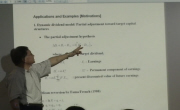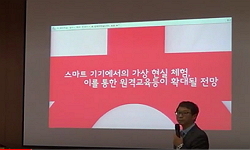Several methods are known for detecting antibody to hepatitis B surface antigen (anti-HBs). Among them, passive hemagglutination (PHA) and radioimmunoassay (RIA) are now used most frequently for measurement of anti-HBs in serum, especially in Korea. B...
http://chineseinput.net/에서 pinyin(병음)방식으로 중국어를 변환할 수 있습니다.
변환된 중국어를 복사하여 사용하시면 됩니다.
- 中文 을 입력하시려면 zhongwen을 입력하시고 space를누르시면됩니다.
- 北京 을 입력하시려면 beijing을 입력하시고 space를 누르시면 됩니다.

B 형 간염 표면항체 검사에 있어서 방사면역 측정법과 수동혈구 응집법의 비교 - B 형 간염 백신 접종자들을 대상으로 - = Comparison between the Method of Radioimmunoassay and Passive Hemagglutination on the Detection of Anti - HBs - in Hepatitis B Vaccinees -
한글로보기https://www.riss.kr/link?id=A3305620
- 저자
- 발행기관
- 학술지명
- 권호사항
-
발행연도
1987
-
작성언어
-
-
주제어
Hepatitis B ; anti - HBs ; Method ; Vaccine
-
KDC
500
-
등재정보
KCI등재후보
-
자료형태
학술저널
- 발행기관 URL
-
수록면
212-215(4쪽)
- 제공처
- 소장기관
-
0
상세조회 -
0
다운로드
부가정보
다국어 초록 (Multilingual Abstract)
Several methods are known for detecting antibody to hepatitis B surface antigen (anti-HBs). Among them, passive hemagglutination (PHA) and radioimmunoassay (RIA) are now used most frequently for measurement of anti-HBs in serum, especially in Korea. Between them, RIA is more sensitive and specific than PHA, but more expensive, complex and requires the availability of a gamma counter. The sensitivity and specificity of PHA falls somewhat short of RIA, it has the advantage in terms of its methodology and its expenses. The technique of RIA is best employed in case the more precise determination of anti-HBs is required, for instance, for the etiological diagnosis of viral hepatitis or for the follow-up of acute B viral hepatitis, Because it is less expensive and simpler to perform, PHA is widely applied for large scale-screening or under the circumstances where economic and technical conditions do not allow the use of RIA, Korea is the endemic area of hepatitis B, and recently hepatitis B vaccination is being conducted nationwide. Therefore, the frequency with which these test is to be performed for the detection of anti-HBs is extremely high. For the purpose of comparing two different detecting methods, PHA and RIA, with respect to anti-HBs in the vaccinated individuals, the author determined anti-HBs by both PHA and RIA simultaneously in one hundred and eleven Korean hospital personnel (nurses and nurse-aids of Paik Hospital, Seoul) who had been previously vaccinated with Hevac-B Pasteur (Institut Pasteur). Results were as follows: 1) Anti-HBs was positive in 110 of 111 subjects by RIA. Among these 110 RIA-positive subjects, positive rate by PHA was 92.7% (102 subjects), and false negative rate 7.3% (8 subjects). Of the 106 subjects with the titers equal to or more than 10 sample ratio units (SRU) by RIA the figure which is considered to bestow immunity, the false negative rate was 4.7% (5 subjects) by PHA. 2) Most of the PHA-false negative subjects were among the subjects with the titers less than 50 SRU by RIA. In half the subjects with titers in the range of 10 to 49. 9 SRU the PHA was positive, The PHA positivity and the specific values of RIA titers showed no significant correlations. To summarize, it is preferable to test the status of the anti-HBs in the vaccinated individuals by PHA, which is more economical and easy to perform even in an inadequately equipped institutions.
동일학술지(권/호) 다른 논문
-
당뇨병환자에서의 인공취도를 이용한 Insulin 요구를 측정
- 대한내과학회
- 이태희(Tai Hee Lee)
- 1987
- KCI등재후보
-
한국인 신이식환자에서 Cyclosporin A 의 약리역동학적 연구
- 대한내과학회
- 권오선(O Sun Kwon)
- 1987
- KCI등재후보
-
여러 질환에서의 Antinuclear Antibody ( ANA ) Test 에 관한 연구
- 대한내과학회
- 조철호(Chul Ho Cho)
- 1987
- KCI등재후보
-
승모판막 질환에서의 Doppler 심초음파도를 이용한 확장기 좌심방 - 좌심실 평균 압력차에 대한 연구
- 대한내과학회
- 김효수(H . S . Kim)
- 1987
- KCI등재후보




 KISS
KISS






